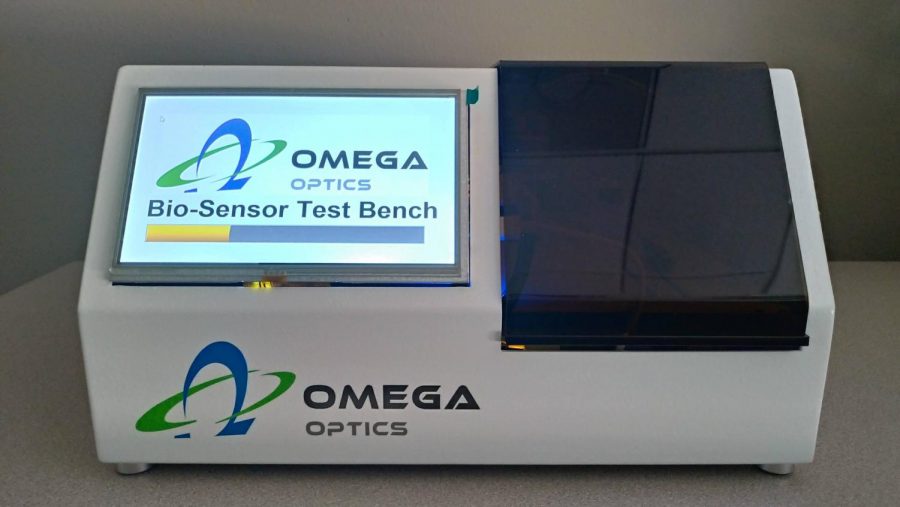UT researchers develop accurate COVID-19 diagnosis machine
October 6, 2021
Editor’s Note: This article first appeared as part of the September 24th flipbook.
UT engineers prototyped the first-ever portable disease diagnosis machine that could help medical professionals quickly and cheaply detect COVID-19 and other illnesses in areas of the world that lack testing infrastructure.
Aref Asghari, an electrical and computer engineering graduate student and a “lab-on-a-chip” contributor, said the device uses light to highlight anomalies in cell samples and detect various viruses. Asghari said the platform has advantages to other testing methods, such as lab or at-home COVID-19 tests, because it delivers results in 30 minutes, offers portability and is inexpensive to make.
“In third-world countries (or) remote areas … they cannot go to (the) hospital,” said Ray Chen, an electrical and computer engineering professor. “So instead of (them) going to (the) hospital, you try to bring the hospital to the remote areas.”
The platform can detect COVID-19 even when someone’s body has a low amount of virus cells, Asghari said. This allows the device to detect asymptomatic cases of COVID-19 more efficiently than other tests, he said.
“The lab (test) results are pretty reliable, but the home test kits are not,” Asghari said.
“Something in between is needed, something that’s not as heavily intensive in equipment as the lab (tests), and something that doesn’t have (as) much of error as the (at-home tests).”
Asghari said the platform’s portability means it can be used in schools, churches and stores, in addition to hospitals, lab facilities and testing sites.
“The issue here … is the ability to detect (COVID-19) at lower doses and lower amounts so we can’t let anything escape under the radar,” Asghari said. “We can’t let anything just go undetected and (let) that person … go around and be a source of contamination.”
Asghari said the pandemic will not end until everyone has access to accurate COVID-19 testing systems.
“We are all part of Earth at the end of the day,” Asghari said. “If the pandemic hits one part of the world, … sooner or later it’s going to the other side of the world.”
Chen said UT engineers began device development in 2007. While the platform was originally created to detect illnesses such as cancers and Alzheimer’s disease, they adapted the device in response to the pandemic. However, it is not available to the public yet because they are looking for investors, Chen said.
Chen said the device’s ability to detect viruses and cancers in early stages is also important because it gives patients and health professionals the ability to fight back before it progresses to a late stage.
“When your lung, your liver (or) your pancreas get attacked (by cancer), you have no feeling, until a lot of side effects come out,” Chen said. “You lose weight, you lose your appetite … and then you go to the doctor and (the) doctors do an examination and find out you’re a cancer patient in a very late stage.”
Chen said he hopes the device can eventually be available to the public.
“Our dream is one day the research device we created in UT can appear in your living room,” Chen said. “(And be) something beneficial to everybody and increase the life quality for everyone.”











